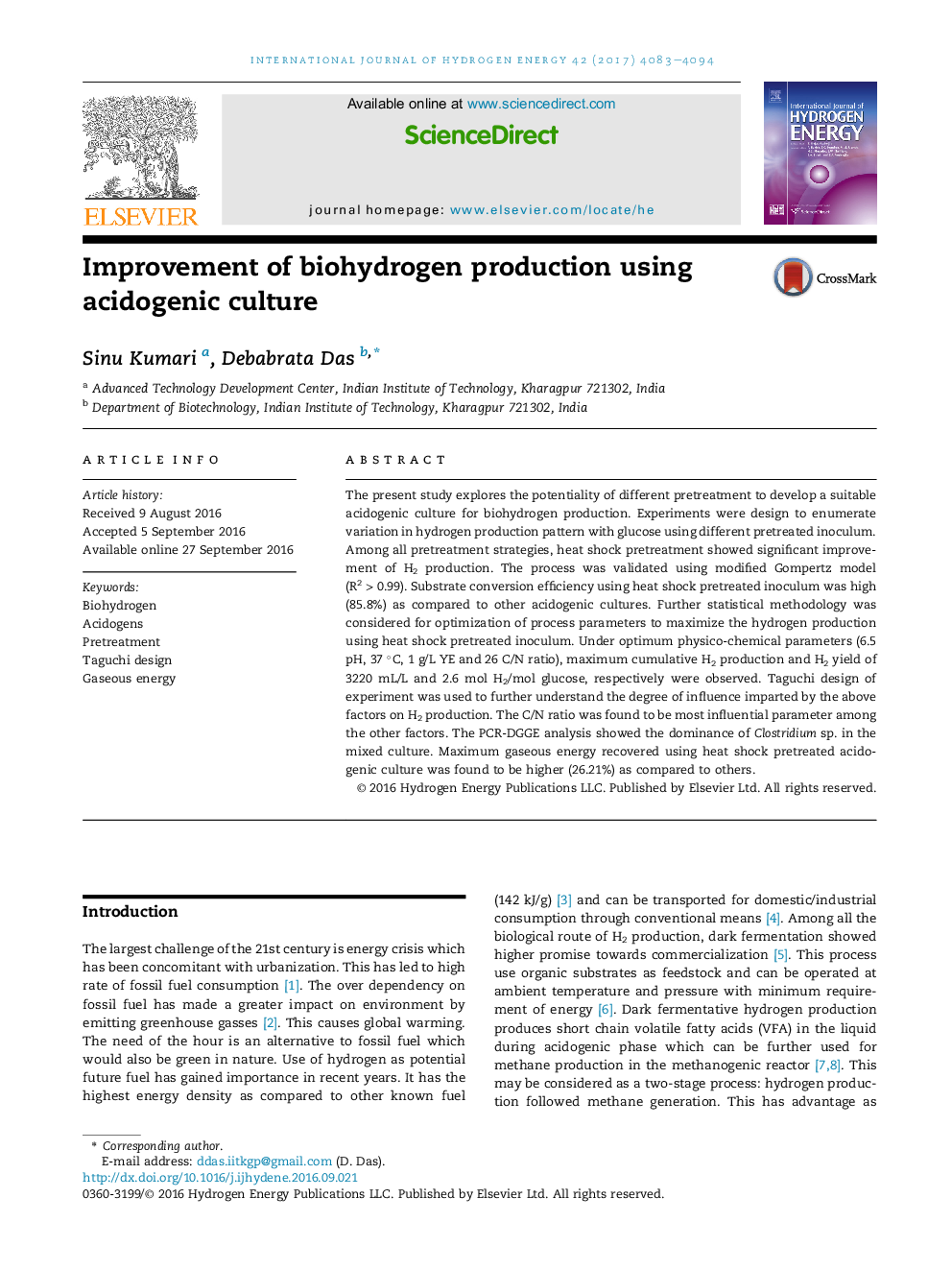| Article ID | Journal | Published Year | Pages | File Type |
|---|---|---|---|---|
| 5146326 | International Journal of Hydrogen Energy | 2017 | 12 Pages |
â¢Development of potential acidogenic mixed consortia for high rate of H2 production.â¢Maximization of hydrogen production by statistical method using Taguchi design.â¢Validation of main products formation using unstructured model.â¢PCR-DGGE analysis to establish the microbial profile of acidogenic mixed consortia.â¢Gaseous energy recovery analysis to evaluate the feasibility of the process.
The present study explores the potentiality of different pretreatment to develop a suitable acidogenic culture for biohydrogen production. Experiments were design to enumerate variation in hydrogen production pattern with glucose using different pretreated inoculum. Among all pretreatment strategies, heat shock pretreatment showed significant improvement of H2 production. The process was validated using modified Gompertz model (R2 > 0.99). Substrate conversion efficiency using heat shock pretreated inoculum was high (85.8%) as compared to other acidogenic cultures. Further statistical methodology was considered for optimization of process parameters to maximize the hydrogen production using heat shock pretreated inoculum. Under optimum physico-chemical parameters (6.5 pH, 37 °C, 1 g/L YE and 26 C/N ratio), maximum cumulative H2 production and H2 yield of 3220 mL/L and 2.6 mol H2/mol glucose, respectively were observed. Taguchi design of experiment was used to further understand the degree of influence imparted by the above factors on H2 production. The C/N ratio was found to be most influential parameter among the other factors. The PCR-DGGE analysis showed the dominance of Clostridium sp. in the mixed culture. Maximum gaseous energy recovered using heat shock pretreated acidogenic culture was found to be higher (26.21%) as compared to others.
Graphical abstractDownload high-res image (189KB)Download full-size image
